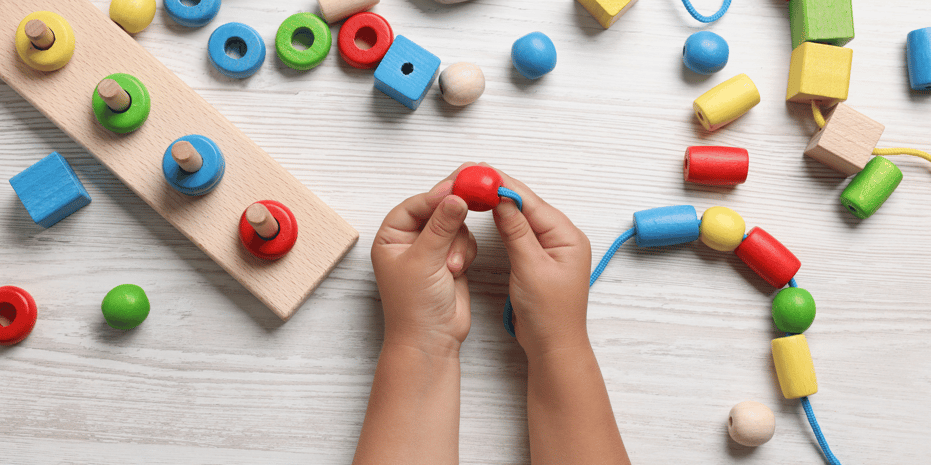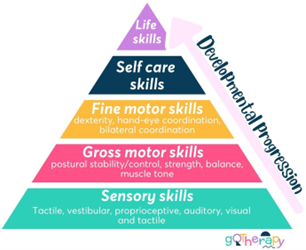Understanding and enhancing fine motor skills in children: development and tips

Fine motor skills are defined as the movements and coordination of the small muscles of the body to perform activities that require precision during our daily life. Typically of our hands and fingers, face, mouth (tongue), eyes and feet, though the majority of teachers and therapists refer to fine motor skills as those that are related to the hands and fingers. For practical purposes of this blog post we will do so too.
Fine motor skills are crucial for supporting independence in activities of daily life such as dressing, playing and eating, as well as performance in school.

Motor skills develop in a specific order known as developmental sequence, progressing from head to toe. This means that skills build upon each other, just like in a pyramid: it begins with sensory skills providing information and stimulation to the body and muscles to develop awareness, strength and muscle tone for head and trunk control and then moving to the shoulders, elbows, wrists, and fingers, as well as the hips, legs, feet, and toes.
Children typically develop from their core outward. Consequently, they also master gross motor skills before refining their fine motor skills.
In early childhood, engaging in free play and activities such as messy play, moulding Play-Doh, crawling, climbing, pouring liquids, playing with Legos, cutting with scissors, colouring with crayons and painting with fingers or a brush, is essential for a child's development of fine motor skills. These activities not only stimulate brain development but also strengthen the small muscles in the hands and fingers, enhancing dexterity. This muscle development is crucial for children to eventually engage in more complex tasks such as turning keys or doorknobs, opening containers, managing small coins or small items, handwriting, typing on a keyboard, and performing basic self-care activities such as dressing, brushing teeth, etc - independently.
Check the following chart for examples of fine motor skills that children typically develop between the ages of 1 and 6 years old:

Children develop fine motor skills over time, starting since they are babies and continuing through childhood; these skills can keep improving all the way through adulthood.
Here are some ways to help children build a strong foundation for development of fine motor skills:
- Engage in playful activities! Play all kinds of play as much as you can and incorporate toys and activities that involve manipulating small objects, such as building blocks, puzzles, threading beads, play with pom poms, sticks, The most effective way to get children to work on strengthening their hands and fingers is by having them be engaged in the task. They won’t even realise that they are working because it is fun and they WANT to do the activity.
- Don’t be afraid of messy play: A good foundation for strong fine motor skills in our children is by helping them develop sensory skills, so promote and engage in sensory messy play as much as you can to develop body awareness and provide stimulation to the hands.
- Play outdoors: as we mentioned above, fine motor skills develop after gross motor Allow your children to explore outdoors and encourage activities such as climbing, crawling, pulling, pushing, squeezing, digging, hanging, building etc.
- Encourage self-help tasks: Involve children in age-appropriate tasks like buttoning clothes, zipping jackets, and pouring drinks. These activities develop independence and refine fine motor skills.
- Practice arts and crafts: Provide opportunities for children to draw, color, cut with scissors, and use playdough or These activities enhance finger strength and control while stimulating creativity.
- Promote finger exercises: Encourage activities that strengthen finger muscles and help children develop a correct pencil grip, such as squeezing clay, using tweezers to pick up small objects, play with pegs and coloring with small crayons.
- Demonstrate and repeat. Patience is key! Fine motor activities can be hard for some children more than others. Allow them time to practice and master new skills at their own pace. Provide positive reinforcement and encouragement to boost their confidence and motivation.





